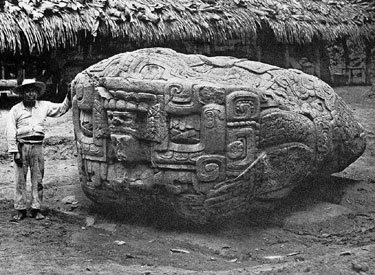The Peaceful Maya Sacrificed Jaguars
Archaeology, Jaguars, Maya, Ritual Sacrifice
The Atlantic headline says it’s been discovered that the Maya had a zoo, but the real news in this story is the discovery that they were using jaguars in their ritual sacrifices. But the Atlantic wouldn’t want to come down hard on that little detail. That could make the worthy and magnificent Maya just about as bad as that dentist who shot Cecil the lion.
In the Mayan city of Copán, at the base of a 30-meter-tall pyramid, there’s a beautiful stone slab known as Altar Q. The altar is square, and each of its meter-wide faces preserves carvings of four of the city’s 16 rulers, including its final king, Yax Pasaj Chan Yoaat, who commissioned the structure in 776. It was as much propaganda as historical record. Though Yax Pasaj wasn’t part of a dynastic bloodline himself, the altar shows him receiving the scepter of kingship from Copán’s founding ruler, thus proving that he was worthy of ruling. The altar was a statement of his legitimacy.
The jaguars probably helped.
There’s a crypt immediately in front of the altar, which contained the bones of several birds, and 16 big cats—jaguars and pumas (cougars) packed so tightly that the people who first excavated them referred to them as “jaguar stew.†It’s likely that these animals were sacrificed on the altar as emblems of power, one cat for each king.
“It’s hard to imagine this very elaborate ritual in one of the hardest times for the Copán dynasty,†says Nawa Sugiyama, an archaeologist at George Mason University. Yax Pasaj was the last person to rule the city before it collapsed, and his reign was one of political turmoil and environmental degradation. Amid that turmoil, he somehow managed to acquire 16 big cats, even though the surrounding valley was too small to house more than five jaguars, and even though these beasts are hard to find, much less to capture.
Sugiyama thinks she knows how he did it. By analyzing the chemicals within the buried cat bones, she and her colleagues showed that jaguars and pumas likely came to Copán from distant regions and were kept in captivity for most of their lives. The city effectively had its own zoo, which was part of a wide trade network that sucked in wildlife from a larger area. For three centuries, wild animals—including the most formidable carnivores around—were brought in, housed, fed, and eventually used in ritual ceremonies.






